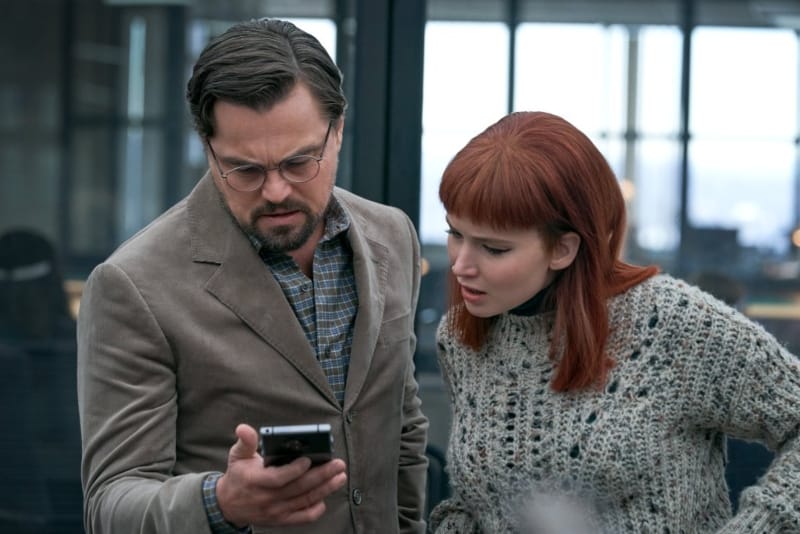#New Details Emerge of Karen Carpenter’s Fatal Battle with Anorexia (Book Excerpt)

It has been 40 years since Karen Carpenter — the charismatic sister half of the multiplatinum-selling sibling act The Carpenters — died at the age of 32, and the chasm she left behind has never been filled. A virtuosic drummer with a sweet, melancholic singing voice, she and brother Richard Carpenter conquered the easy-listening charts with melodically sophisticated hits like “Superstar” and “We’ve Only Just Begun.” Even President Richard Nixon was a fan and invited the Carpenters to the Oval Office in 1972 — cementing their status as the ultimate squares to the Flower Power generation. But time has been kind to the Carpenters, whose signature sound is now widely considered an American classic. In a new biography, Lead Sister: The Story of Karen Carpenter, author Lucy O’Brien reframes Karen Carpenter’s life as that of a pioneering woman within the male-dominated recording industry and offers new insights into her tragic battle with anorexia, a mysterious eating disorder about which very little was known at the time. In this excerpt, Carpenter, having realized her disease was spiraling out of control, seeks out professional help in New York City in 1982.
Anorexia had become a tyrannical force in Karen’s psyche, telling her that food was an enemy to be fought. Thoughts of food and the methods to eliminate it had become obsessive, dominating her day and disrupting her sleep. “It’s like being haunted,” she said.
She knew instinctively that she needed someone strong to help her fight the anorexia, someone who saw through her denial and her attempts to hide the illness. In his phone calls, Steven Levenkron had been firm and direct about the treatment he could offer, speaking in a no-nonsense way that reassured her. The psychotherapist had already been practicing for 12 years and was on a mission to develop effective treatment for the mystery disease.
Describing himself as a “nurturant-authoritative” psychotherapist, Levenkron’s approach was controversial. With his treatment, Karen would be dependent on him in order to override the authority of the disease, until she established her own separate identity. He would become a father figure, guiding and navigating her through the process. Suspicious of Levenkron, Karen’s family thought she would have been better off being “fixed” by a Beverly Hills doctor — but that hadn’t worked for her, and she was ready to try something more radical.
In January 1982, Karen flew to New York and moved into a two-bedroom suite in the City Regency Hotel near Central Park, taking along 22 suitcases of matching clothes and shoes. Karen Ichiuji [aka singer Karen Ramone] moved into the second bedroom, as a source of support and companionship for the duration of her stay. Carpenter had invested a lot in this treatment — the suite was $6,000 a month before food and phone bills — but, she argued, she needed to feel comfortable. Then she paid Levenkron $100 for each session, which totaled $2,000 a month. Karen’s willingness to set aside the time and the money showed her initial level of commitment to the therapy.
In theory she was determined to beat her anorexia, but from the beginning she was undermining the treatment in surreptitious ways. Levenkron’s office on East 79th Street was 19 blocks away from the Regency Hotel, but instead of conserving energy by taking a limousine Karen would power-walk up Madison Avenue, burning calories as she did so. After breakfast with Itchie —bacon, two eggs over easy and toast — she would visit the bathroom and ingest Dulcolax laxatives so she could purge. And in the suite she found it hard to relax, standing and continually moving about in order to lose weight.
Levenkron was used to his patients showing resistance to treatment, so he noticed immediately her restlessness and frequent trips to the bathroom. Her compulsive behaviors had developed over time, so he knew it would take a while to dislodge them. At one of their early sessions he discussed with Karen what she was taking to expel food and she owned up, saying she could ingest more than 90 Dulcolax at once. Under his supervision, the aim was for her to cut down and eventually stop. He then asked her if she had taken anything else and she admitted to taking 10 pills a day of Synthroid, a thyroid medication, which would have the effect of speeding up her metabolism. Levenkron was horrified. Overdosage of thyroid medication could lead to coma, convulsions and heart attacks. “Give me the bottle,” he said. Karen handed it over and he locked it in his desk drawer.
Over the next three months during intensive therapy sessions Karen began to disentangle the way anorexia had become her security, her way of coping with the world. Levenkron noticed that she was not used to having her needs met and was unaccustomed to receiving care. During one pivotal session he said that she needed to accept his care before they could make any progress.
“I don’t need any care,” she said. “I’m successful like this.”
“But you do need care because you are incompetent … because you can’t keep yourself alive.”
She looked at him in shock. This was a turning point for Karen, when she recognized how much she had been an attentive friend and daughter, skilled at nurturing other people but unable to nurture herself. She agreed with Levenkron that she would stop taking laxatives.
Karen kept in touch with her family by phone and in April 1982 went home for a two-week visit, halfway through her treatment. Friends were concerned that despite her therapy Karen still looked emaciated and was yet to put on weight. She seemed purposeful, however, talking about a schedule for recovery, firmly believing that she could conquer her illness within the timeframe allocated and still honor recording commitments for the next album. It was during this fortnight that Karen went into A&M’s Studio D with Richard and began work on new demos. They laid down the vocal for “Now,” a Roger Nichols and Dean Pitchford song. On one level it is about the supportive power of romantic love, but it could be heard another way as an “end of days” spiritual transformation. On both these tracks Karen’s voice is a little nasal and below par, but there is a new emotional openness in her delivery that suggests although she was physically still very unwell, she was maturing and developing self-awareness. “Now” was to be her last recording.
By the summer of 1982, Karen seemed to be making headway in mentally understanding her condition, but the compulsive behaviors were entrenched and she still wasn’t putting on weight. A concerned Itchie rang Levenkron, saying that Karen was losing energy and getting thinner and she wondered when this thing was going to turn around. “She’s not responding as quickly as I’d hoped,” he said and decided to try something a little more confrontational. The next day he got Karen to change into a bikini, stand in front of a long mirror and look at her emaciated body. She didn’t see anything wrong; in fact she told him she was gaining some weight.
By the autumn, Karen was getting dangerously close to collapse. Levenkron was alarmed one day when she came into his office saying, “My heart is beating funny.” She also said that she felt dizzy and couldn’t walk. Realizing that she needed immediate medical attention, Levenkron got in touch with his friend Dr. Gerald Bernstein and on Sept. 20 she was admitted to Lenox Hill, an intensive-care hospital on the Upper East Side. Karen weighed 77 pounds and was severely dehydrated with a blood potassium level of 1.8. Potassium is critical to the functioning of heart muscle cells and the normal healthy level is 3.6–5.2 millimoles per liter. Anything less than 2.5 is life-threatening. Also Karen’s digestive tract was so damaged she had to be fed by intravenous drip.
Even though she had resisted gaining weight for a long time, once she was in hospital Karen allowed herself to be cared for. Over the next seven weeks she gained 20 pounds, first from intravenous nutrition and then through eating small meals. Karen began making plans for the next phase of her life, and on Oct. 28 in her hospital room she signed a petition for divorce [from Thomas James Burris, whom she married in 1980]. This was her statement of independence.
Karen then discharged herself from hospital on Nov. 8, stubbornly committed to keeping to her own schedule of being “well” by Thanksgiving. She went back to the Regency Hotel with a personal nurse, under strict instructions not to speed-walk to Levenkron’s office. After two weeks Karen felt bored and homesick. Declaring, “I’m cured,” she got [her parents] Agnes and Harold to fly over and take her back home to Los Angeles. During her last therapy appointment on Nov. 16, she gave Levenkron a framed needlepoint canvas she had stitched in her hotel suite. Emblazoned with the phrase “YOU WIN — I GAIN,” the canvas communicated with Karen’s customary wordplay that, to her at least, the goal had been achieved. Levenkron told Karen she was leaving him too soon, that treatment would take at least three years, but she waved away his concern, promising to follow up with him on the phone.
Karen made it home [to Downey, California,] for Thanksgiving, weighing just over 100 pounds. She ate ostentatiously on Thanksgiving Day and rang Itchie that night to tell her about everything she had eaten. Those around her felt relief and delight at what seemed to be progress, that she was keeping busy and was well enough to honor social engagements. In January 1983, Karen was living her life as if she was back on track, shopping and socializing. She bounded into Herb Alpert’s office on New Year’s Day saying, “Look at me!,” and he agreed that she looked better. She told him she couldn’t wait to get back into the studio and also get a group together and start performing again. She met with Richard and their college friend Dennis Heath on Jan. 14, but halfway through dinner she looked stricken, excused herself and went to the ladies room. When Karen returned to the table she said she was fine and they went to the nearby A&M studios to listen to playback of the tracks recorded the previous April.
On Jan. 27, Karen’s housekeeper Florine Elie found her lying on the floor of the wardrobe in her Century City apartment. Karen was groggy and barely awake, so Elie helped her into bed and got on with her cleaning. By the time she finished, Karen was sitting up, saying she felt better. Elie was troubled, though, and rang to check on her the next morning.
On Feb. 1, Karen dined with Richard at Scandia on Sunset Boulevard and they were joined by their stage producer, Joe Layton, to discuss plans for touring. On Feb. 2, Karen drove to [her attorney Werner] Wolfen’s office to look again at her divorce papers and they made an appointment to sign the documents on Feb. 4 at 3 p.m. In these moments, Karen was industrious and elated, keen to rebuild her life. She rang Itchie, who at that point was nine months pregnant with her and Phil Ramone’s first child. Karen talked about her plans to go to New York and be there for the birth.
On Feb. 3, she drove from Century City to Downey, where she met her mother. Karen wanted to buy a new washer-drier for her condominium and, being a good Downey girl, she decided to get it over the counter at Gemco hypermarket. When she couldn’t find what she wanted that afternoon, she decided to sleep over at her parents’ house and continue the search in the morning. She, Harold, and Agnes then went out to Big Boy to eat, and Karen had a shrimp salad. She was still hungry when they left the restaurant, so she stopped for a taco on the way home.
On the morning of Feb. 4, Karen awoke, padded down to the kitchen, turned on the coffee pot and went back upstairs. At 8:45 a.m. Agnes heard the wardrobe doors slide open in the room above. “Karen’s up,” she said to Harold, before going down to the kitchen. When the coffee was ready she called the bedroom phone, but Karen didn’t answer. Agnes went to the foot of the stairs and called again but there was no response, so she went up to the bedroom. She found Karen lying unclothed and motionless on the wardrobe floor. Clutching her close, she screamed to Harold to call for help.
Karen was admitted to Downey Community Hospital at 9:23 a.m., having gone into full cardiac arrest. An assistant to the anesthetist was a family friend who recognized Karen and was distraught. When she told the registered nurse, Pat Tomlin, who their patient was, she realized that the hospital would need to be prepared for a press avalanche and sent one of the staff to inform the hospital manager. Dr. Irv Edwards and his ER team spent twenty-eight minutes trying to revive Karen, but at 9:51 she was pronounced dead. Agnes and Harold were distraught. “Can’t you bring her back?” they wailed, but Edwards gently explained there was nothing more they could do. Richard, meanwhile, sat there feeling numb and hopeless, trying to process the fact that his sister, his lifelong musical partner, was dead at 32 years old.
Excerpted from the book Lead Sister: The Story of Karen Carpenter by Lucy O’Brien. Used by permission of the publisher Rowman & Littlefield. All rights reserved.
If you liked the article, do not forget to share it with your friends. Follow us on Google News too, click on the star and choose us from your favorites.
For forums sites go to Forum.BuradaBiliyorum.Com
If you want to read more Like this articles, you can visit our Social Media category.




